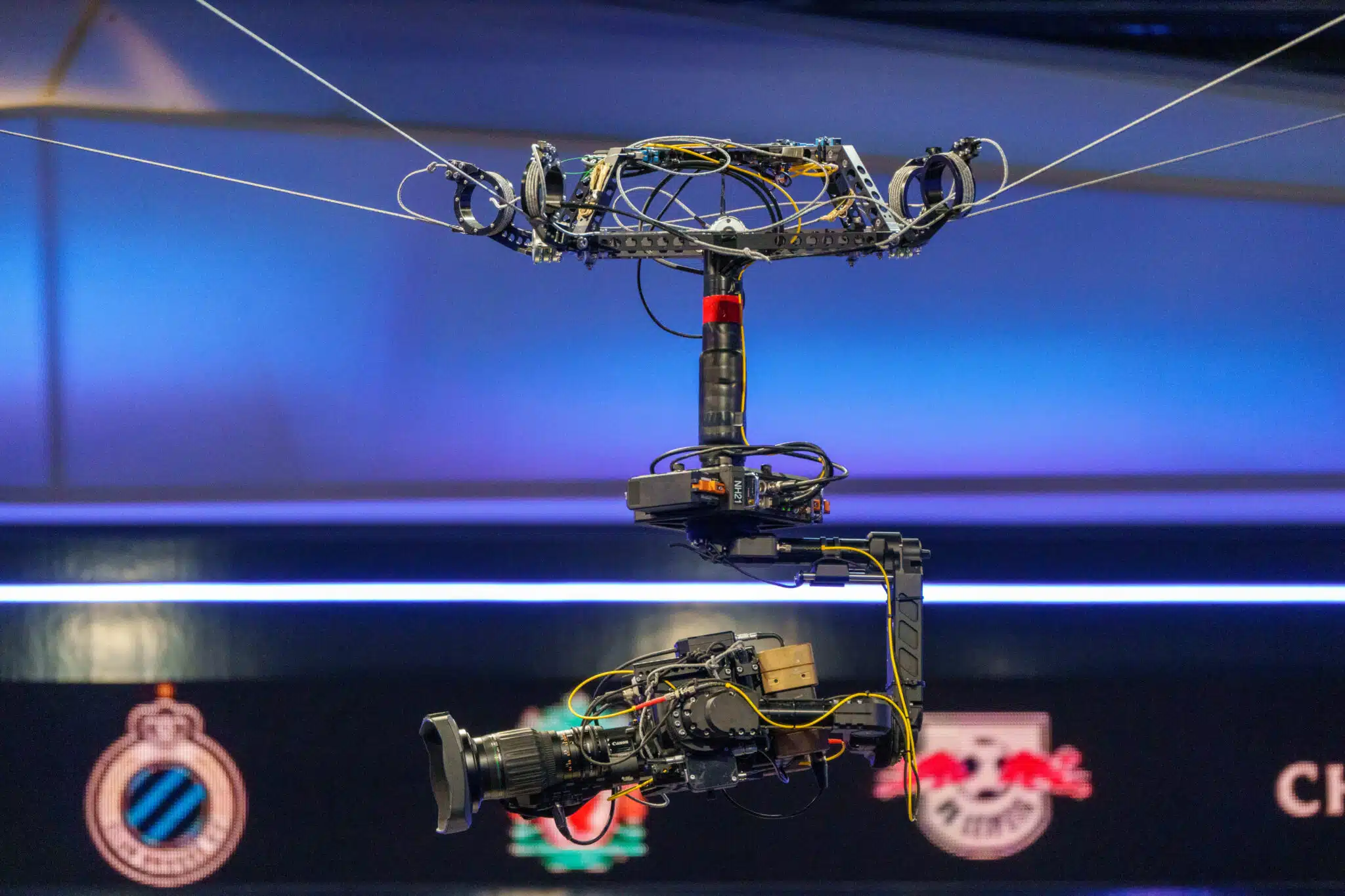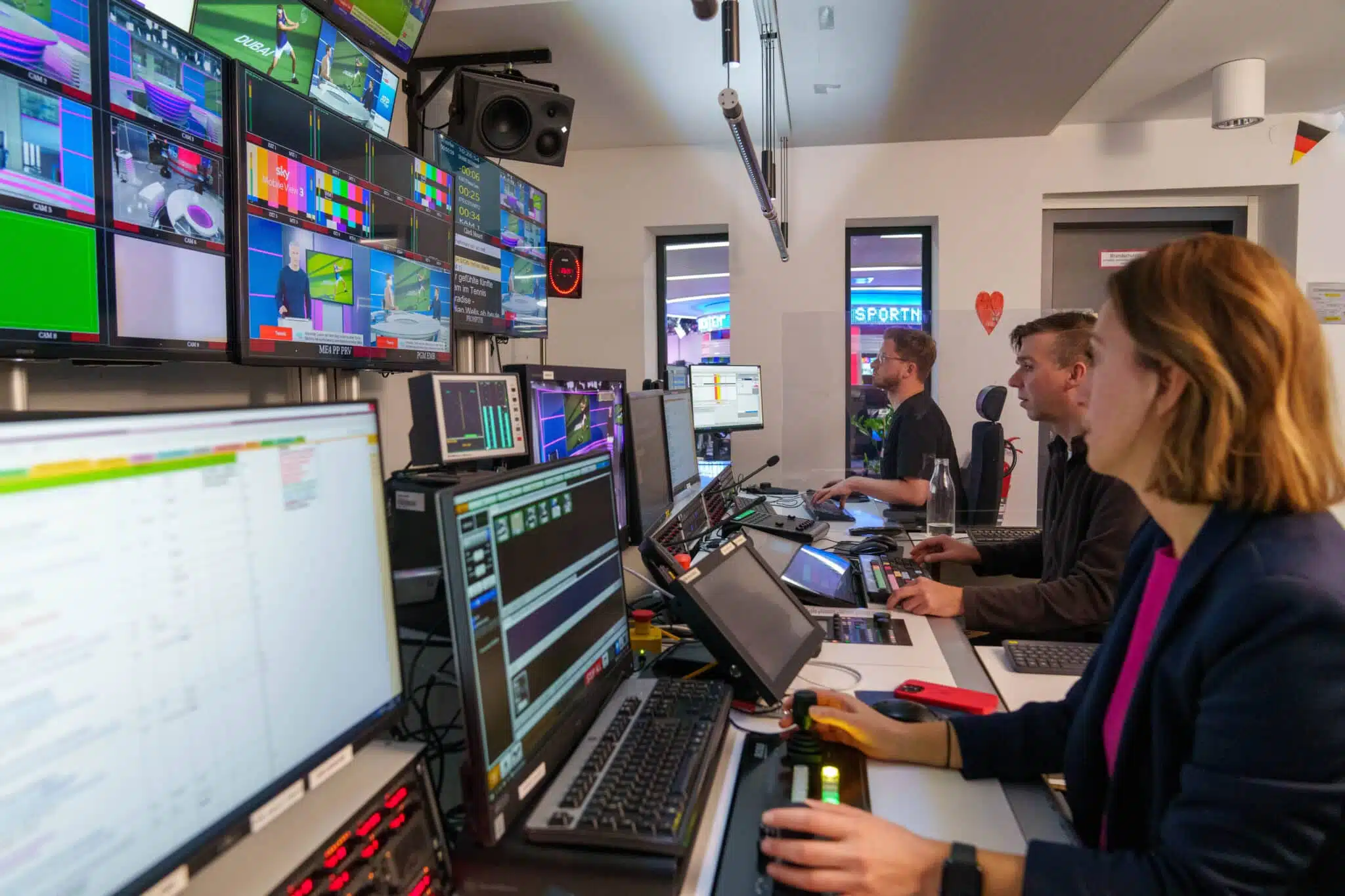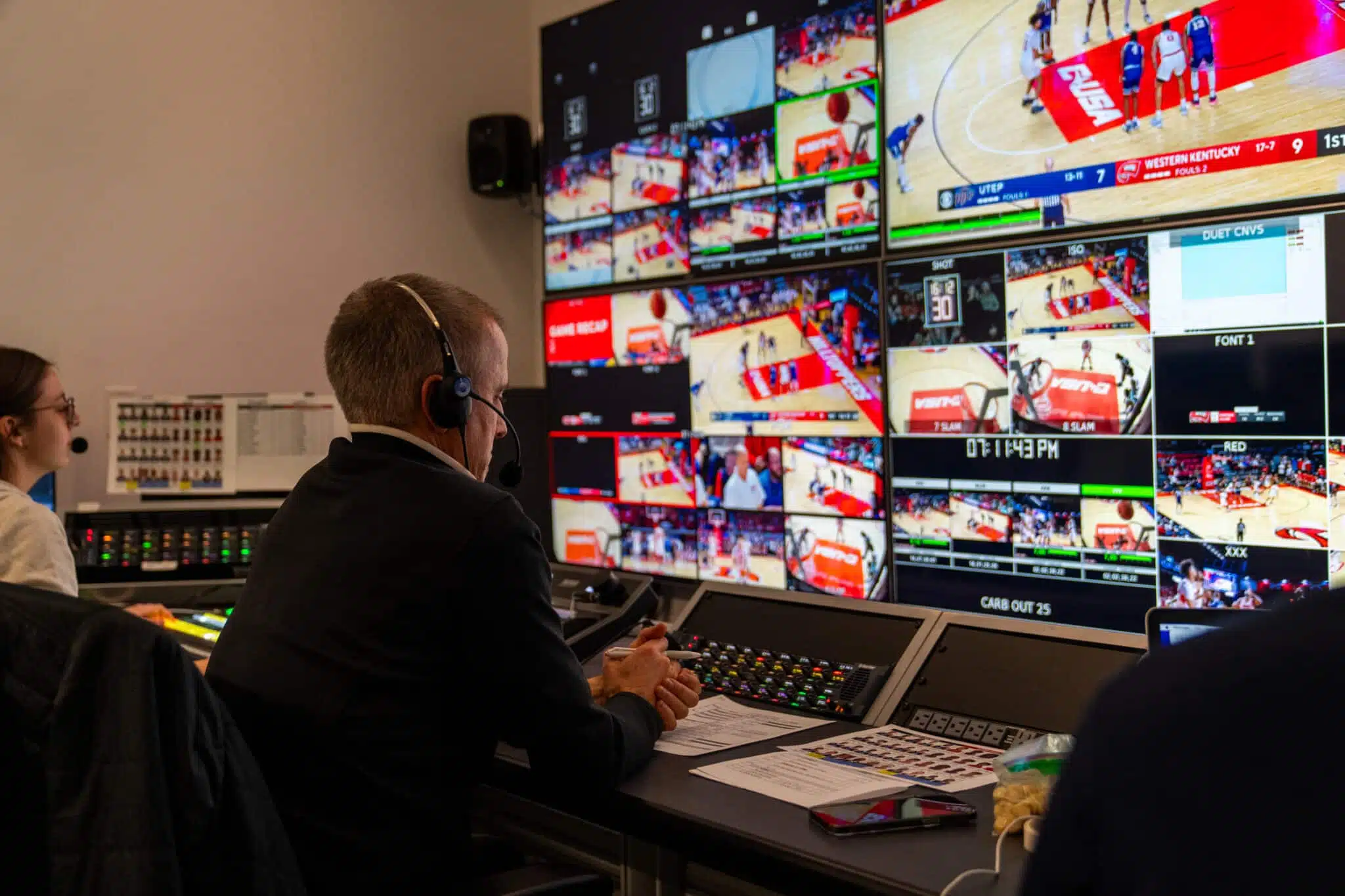February 27, 2024 - Ross Video Team, Insights & Resources
6 Game-Changing Technologies in Modern Sports Broadcasting


Live sports are high-energy entertainment. That’s why it’s one of the only remaining genres people still feel they must tune in to live for the whole experience. Sports broadcasters bring the energy from stadiums to fans at home, giving audiences the best seat in the house—a process that is challenging, rewarding, and only made possible by technology.
Broadcasters must have the latest tools and tech, stay well-informed on the best strategies for implementing those tools into their workflows, and be capable of adapting to changes in audience habits and preferences at the drop of a hat.
Here are the technologies leading sports broadcasters are investing in to stay ahead of the curve to ensure they give fans who can’t make it to the stadium the best seats in the house.
Modern technology has changed how fans interact with stories, making the traditional passive viewing experience seem far less engaging. New camera systems, technologies, and tools have been adopted quickly and are dramatically shifting audience expectations. Today, audiences expect a more interactive viewing experience, often one that involves multiple camera angles, integrated data, and customizable interfaces.
Here are the top innovations helping sports broadcasters to break new ground in 2024.
Sports broadcasters are in a race for the most unique, compelling, and eye-catching shots. Innovative camera systems help capture the unique moments and energy that audiences at home crave. By expanding the toolkit of shots, angles, and movements your production can capture, you develop your visual vocabulary to communicate more of that on-pitch energy with your audience.
Automating your production workflows is one of the significant enhancements you can make to your broadcasts. For example, robotic camera systems allow broadcasters to automate complex movements with accuracy and reliability, while real-time graphics help broadcasters automate overlays and other visual effects in the moment.
In sport, data drives decision-making at every level—from building a squad right through to training and tactics. As fans’ appetite for deeper tactical knowledge intensifies, data and analytics integrations empower sports broadcasters to deliver live relevant and resonant data that helps to shape a story or emphasise sub-narratives developing in the game.
Advanced real-time graphics add depth and color to the fan experience. With the rise of video games, esports, and live streaming, viewers expect and demand high-fidelity graphics, 3D models, and real-time statistic feeds—or they will simply turn to the phone screens.
Sports fans value control over their viewing experience, and extended reality (XR) tools like augmented reality (AR) and virtual reality (VR) give broadcasters an unprecedented ability to customize content. XR technology immerses fans in the game, giving fans more granular influence over visualizations and overlays
Hyperconverged technologies are synergy in practice—this is gear that performs the functions of multiple tools without compromising the quality of their output. These ultra-effective devices boost both the quality and cost-effectiveness of your production.
While fans of sport represent a diverse, eclectic group, one consensus is clear: broadcast quality is the most crucial factor for fans. But ‘quality’ is a continuously rising bar.
Modern audiences expect more from their broadcasters than in previous generations. Audiences want more variety, more information, and more control than ever before. That makes investing in new technologies a must for broadcasters.
Keeping up with this change, while staying competitive and meeting budget constraints is a major pressure on sports broadcasters in 2024. Still, sports broadcasters can rise to the occasion with the right combination of high-quality tools and leadership.
Embrace Technological Innovation: To stay ahead of the curve, sports broadcasters must invest in cutting-edge technologies that enhance the viewing experience and meet evolving audience expectations.
Adaptability is Key: With audience preferences and habits evolving rapidly, broadcasters must be flexible and adaptive, ready to incorporate new tools and strategies into their workflows to meet the demands of modern viewers.
Quality Matters: Despite the proliferation of content options, broadcast quality remains paramount for sports fans. Investing in high-quality tools and maintaining broadcast excellence is essential for retaining audience engagement and loyalty in a competitive landscape.
Sports broadcasting is undergoing a seismic shift, with global audiences consuming live events in new and diverse ways. From multi-screen viewing to the rise of social media engagement, modern sports fans are more connected—and selective—than ever before.
According to our recent research, conducted in partnership with Kantar, sports audiences are adapting to new technologies and media formats at an unprecedented rate. These behaviour shifts present challenges and opportunities for broadcasters and rights holders.


The way audiences consume sport is changing faster than many broadcasters can keep up. Technology has given broadcasters more flexibility and control than ever before but has …

Sports fans are diverse, but one thing is clear: the closer they are to the action, the better. They care about high-quality live broadcasts because — if …

Sports broadcasting is undergoing a seismic shift, with global audiences consuming live events in new and diverse ways. From multi-screen viewing to the rise of social media …
Sports fans expect more—can your broadcast keep up? Stay ahead with Ross Video’s Definitive Guide to the Modern Sports Viewer—your go-to resource for the latest trends in fan engagement, production innovation, and sports viewership shifts.